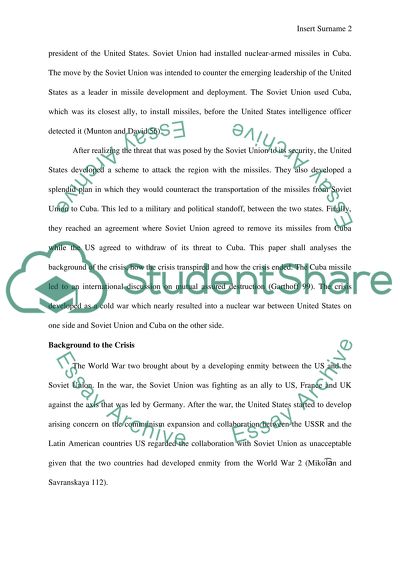Cite this document
(“Cuban missile crisis Essay Example | Topics and Well Written Essays - 1750 words”, n.d.)
Retrieved from https://studentshare.org/history/1640219-cuban-missile-crisis
Retrieved from https://studentshare.org/history/1640219-cuban-missile-crisis
(Cuban Missile Crisis Essay Example | Topics and Well Written Essays - 1750 Words)
https://studentshare.org/history/1640219-cuban-missile-crisis.
https://studentshare.org/history/1640219-cuban-missile-crisis.
“Cuban Missile Crisis Essay Example | Topics and Well Written Essays - 1750 Words”, n.d. https://studentshare.org/history/1640219-cuban-missile-crisis.


